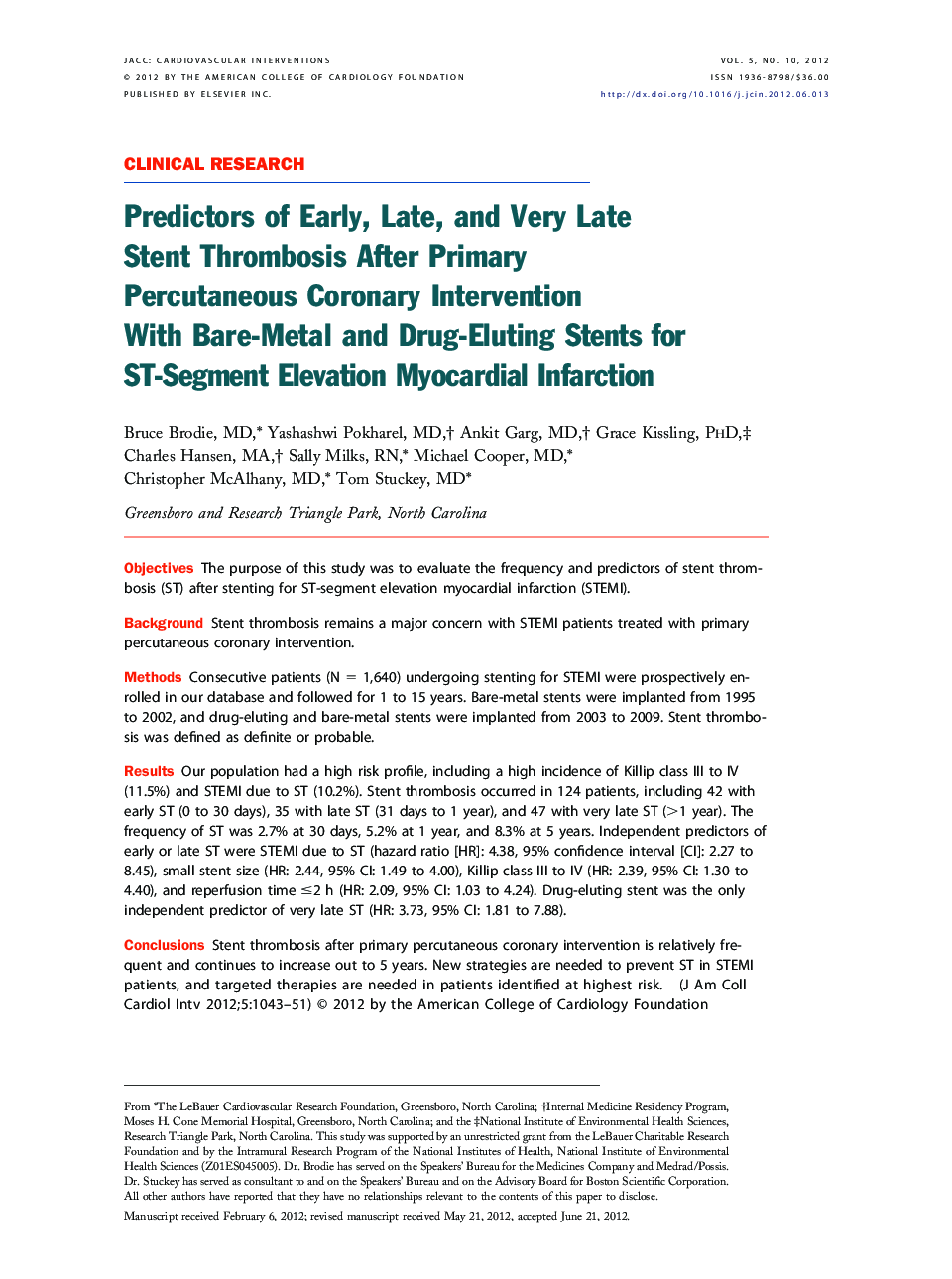| کد مقاله | کد نشریه | سال انتشار | مقاله انگلیسی | نسخه تمام متن |
|---|---|---|---|---|
| 2940725 | 1177040 | 2012 | 9 صفحه PDF | دانلود رایگان |

ObjectivesThe purpose of this study was to evaluate the frequency and predictors of stent thrombosis (ST) after stenting for ST-segment elevation myocardial infarction (STEMI).BackgroundStent thrombosis remains a major concern with STEMI patients treated with primary percutaneous coronary intervention.MethodsConsecutive patients (N = 1,640) undergoing stenting for STEMI were prospectively enrolled in our database and followed for 1 to 15 years. Bare-metal stents were implanted from 1995 to 2002, and drug-eluting and bare-metal stents were implanted from 2003 to 2009. Stent thrombosis was defined as definite or probable.ResultsOur population had a high risk profile, including a high incidence of Killip class III to IV (11.5%) and STEMI due to ST (10.2%). Stent thrombosis occurred in 124 patients, including 42 with early ST (0 to 30 days), 35 with late ST (31 days to 1 year), and 47 with very late ST (>1 year). The frequency of ST was 2.7% at 30 days, 5.2% at 1 year, and 8.3% at 5 years. Independent predictors of early or late ST were STEMI due to ST (hazard ratio [HR]: 4.38, 95% confidence interval [CI]: 2.27 to 8.45), small stent size (HR: 2.44, 95% CI: 1.49 to 4.00), Killip class III to IV (HR: 2.39, 95% CI: 1.30 to 4.40), and reperfusion time ≤2 h (HR: 2.09, 95% CI: 1.03 to 4.24). Drug-eluting stent was the only independent predictor of very late ST (HR: 3.73, 95% CI: 1.81 to 7.88).ConclusionsStent thrombosis after primary percutaneous coronary intervention is relatively frequent and continues to increase out to 5 years. New strategies are needed to prevent ST in STEMI patients, and targeted therapies are needed in patients identified at highest risk.
Journal: JACC: Cardiovascular Interventions - Volume 5, Issue 10, October 2012, Pages 1043–1051